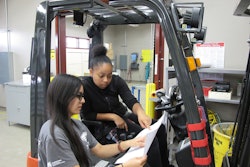
In December 2018, the Accounting Standards Update (ASU) Topic 842 began to take effect. Generally Accepted Accounting Principles (GAAP) now requires all companies to recognize long-term leases as right-of-use assets along with commensurate lease liabilities on their balance sheets – a change from previous protocol. If you’re in the manufacturing industry, this change might seem like just another box to check with your finance department, but you should not treat it lightly. If you’re not careful, it could have damaging implications for your balance sheet and your business.
While this new standard will apply across industries, it will have a significant impact on the manufacturing industry because of the high volume of long-term leases that are a concrete part of manufacturers’ business operations. Accounting practitioners estimate that over $2 trillion of lease-related liabilities will be added to the S&P 500 financial statements. So, what are the real risks at hand when ASC 842 goes into effect? What can you do to make sure it is a seamless transition?
Generally speaking, ASC 842 will require companies to recognize the present value of the lease payments discounted using the company’s average cost of funds as an asset and liability on the balance sheet.
The upshot is that if your balance sheet sees a substantial increase in debt from the long-term leases you will now need to recognize, it could cause you to violate your bank covenants, harming your ability to access new credit. Primary trade vendors may also become wary and could curtail their credit terms, which would impact your operating cash flow.
Because of this, there are certain manufacturers that should be more worried than others about this change. Those with high existing debt loads, strained creditor relations, or other types of financial distress are particularly at risk because the changes could disrupt an already delicate lender-borrower relationship.
For example, if you are a highly-leveraged manufacturer looking to increase production capacity and grow profitability, you might want to build a new assembly line. Accordingly, you might approach an equipment vendor for financial terms to acquire the equipment. As part of their diligence process, the vendor would ask to review your financial statements. If they saw that you were already overleveraged, they might decline to extend you credit, which would hurt your ability to expand your production line and increase capacity and profitability.
This issue is especially timely as the manufacturing industry invests heavily in plant upgrades, automation and capacity expansions. And upgrading production is not getting cheaper. In a manufacturing industry undergoing a transformative, sometimes painful process of integrating technologies like automation and artificial intelligence, your new plants will need to be more advanced than ever before to compete.
With all this in mind, how should you and your manufacturing company prepare? ASC 842 went into effect for public companies (for annual reporting periods) in December 2018, and goes into effect for all companies in December 2019. In order to make sure everything is set, you should first assess the amount of exposure you face from leases on your balance sheet and determine which leases are essential. Second, you should identify ways that you can reduce your debt load without needing to renegotiate anything, such as focusing on paying down debt that might put you over the covenant limits. The final step, if there is no way to keep yourself under the covenant limits, is to proactively approach your creditors to discuss the changes and negotiate an adjustment.
This last part can get tricky. Most lenders are willing to adjust their terms for a fee, but if your creditors are looking for a chance to exit their position, they could make life difficult and could turn down your request. If you are in a financially precarious situation, you might be able to change the indebtedness terms in your covenants—but with the price of costly concessions on other terms. This is why it is important to maintain an ongoing relationship with your creditors so that you can determine how they will react to the changes. Educating your lenders as to the impact of ASC 842 on your balance sheet is a fundamental step toward obtaining the necessary amendments.
Preparing for ASC 842 will ensure that your business maintains a tenable balance sheet and the ability to access new credit for growth. At the end of the day, ASC 842 could be all smoke and no fire, but by failing to prepare, you could be setting your business up for a balance sheet reckoning down the road.













![Pros To Know 2026 [color]](https://img.sdcexec.com/mindful/acbm/workspaces/default/uploads/2025/08/prostoknow-2026-color.mduFvhpgMk.png?ar=16%3A9&auto=format%2Ccompress&bg=fff&fill-color=fff&fit=fill&h=135&q=70&w=240)





